TalentNeuron Personas
TalentNeuron
Gartner, 2018
As we learned more about TalentNeuron’s users, it was important for us to revisit the personas we referenced to make decisions for the product. In order to do this, we needed to make a system that grew our personas as we became more knowledgeable about our users’ motivations, needs, and challenges.
Overview
Problem
While conducting user interviews, we began to notice several new patterns in our user base and some of our users’ processes and motivations became clearer. We also discovered new sets of core users that we had not considered before. Because of this data, we needed to re-visit our personas so we could make sure we were making the right product decisions for all of our users.
Solution
Create a process that allows our team to revisit and create additional personas when we collect data in user research that gives us new and additive information about our users.
My Role
I facilitated brainstorm and workshop sessions that allowed us to learn and think critically about our users, developed proto-personas and identified key users we wanted to test and validate for, collected data on users through user research, and helped distribute updated personas across the TalentNeuron organization.
Methods and Execution
User Research
- Collected existing user data to make educated hypotheses about our users
- Consulted with our team’s experts to get a better picture of the recruiting process as a whole
- Created proto-personas to test with real users
- Conducted user research to validate our proto-personas
- Developed official personas through the data collected during our user research
- Used Adobe InDesign to create persona collateral for the team to use when developing features for the product
Process
We wanted to fully understand the current use cases TalentNeuron focuses on and how they help our users before defining how we will develop our personas. To achieve this, we needed to analyze the full recruiting life cycle and identify when and why users use our data within this process.
The UX team dedicated a week to study our product and its users. This process included a variety of workshops and brainstorming sessions that helped guide conversations. We brought in colleagues from across the TalentNeuron organization who gave their input on our analysis based on their expertise within the business. They allowed us to address the concepts we overlooked and gave us a better understanding of what other factors could be affecting our users. Many of these experts were from our Product, Data Science, Customer Support, and Customer Service teams.
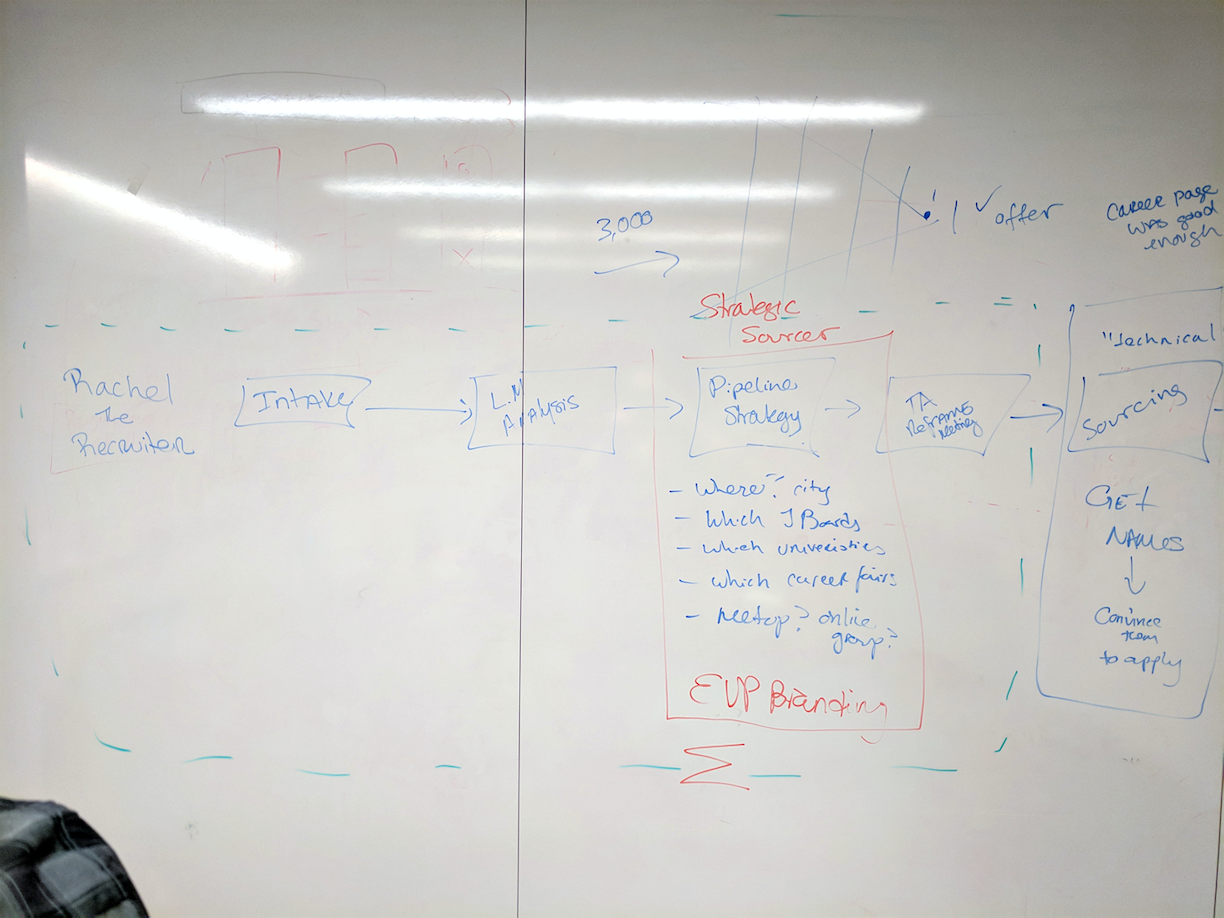
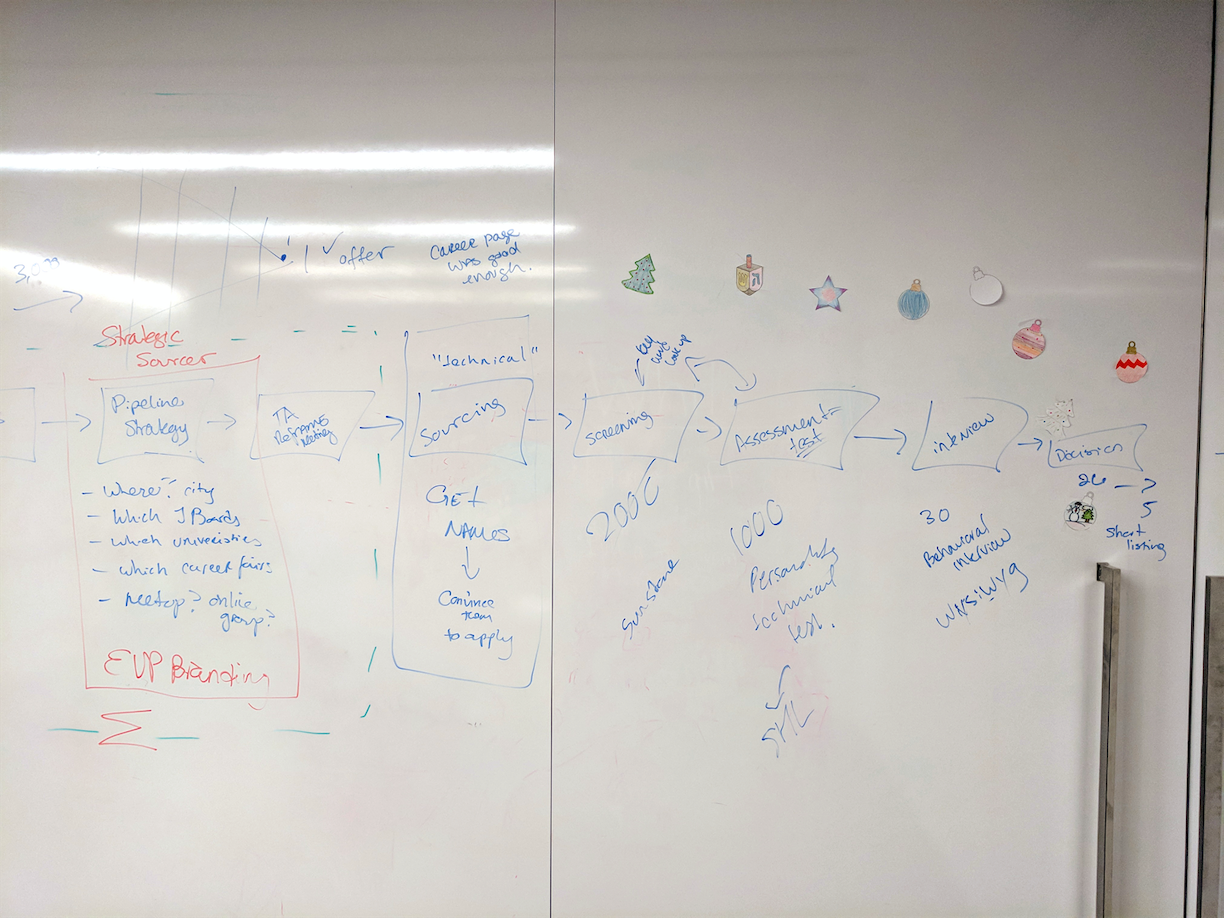
When we were confident in the recruiting life cycle we outlined, we assigned a persona to each role responsible for a critical component of the framework. Throughout this identification process, we made sure to keep track of each persona’s particular challenges, goals, and responsibilities. We quickly encountered roles without defined personas within our system and kept track of the same data. We would then use this information to create proto-personas for these possible users. Before we could upgrade a proto-persona to an official persona, we needed to conduct user research and confirm that they align with the business’ needs.
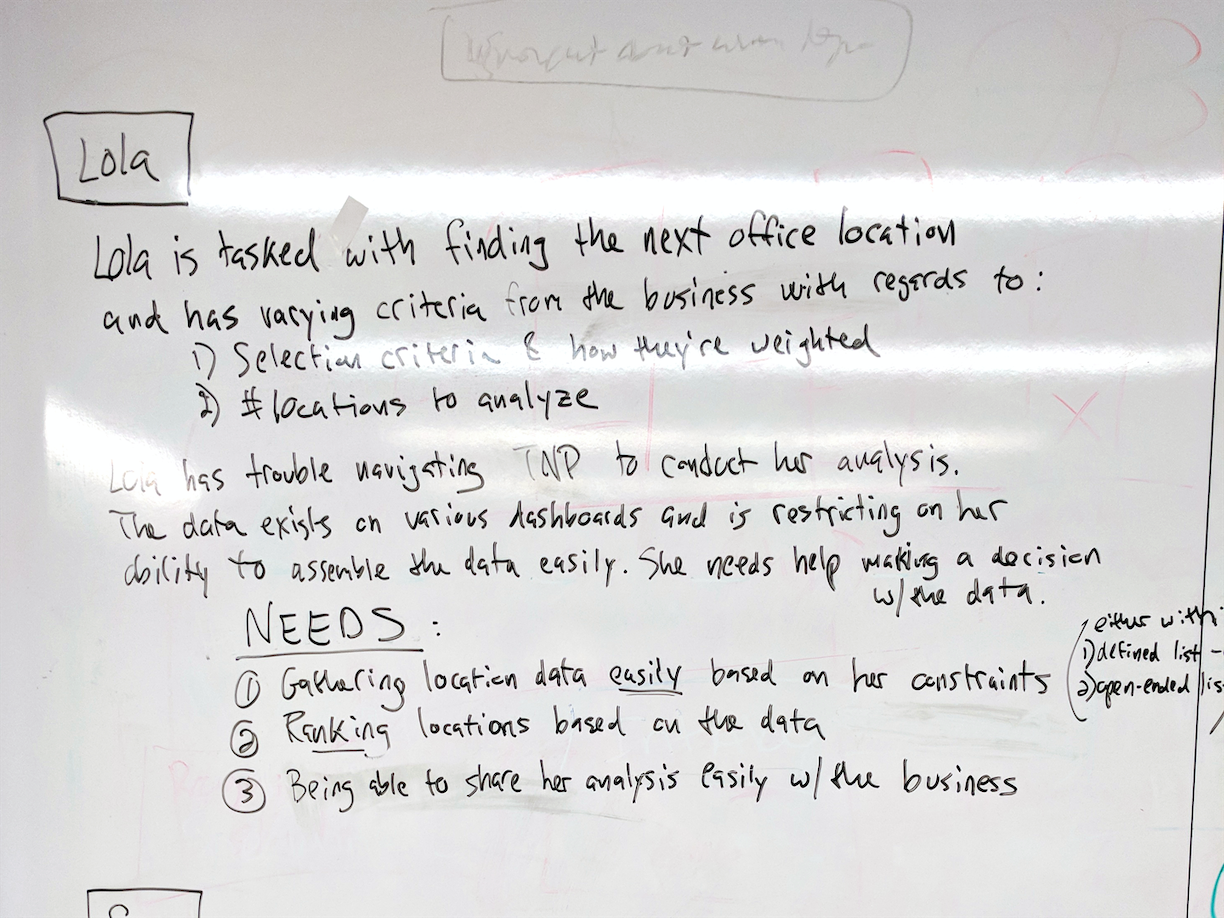

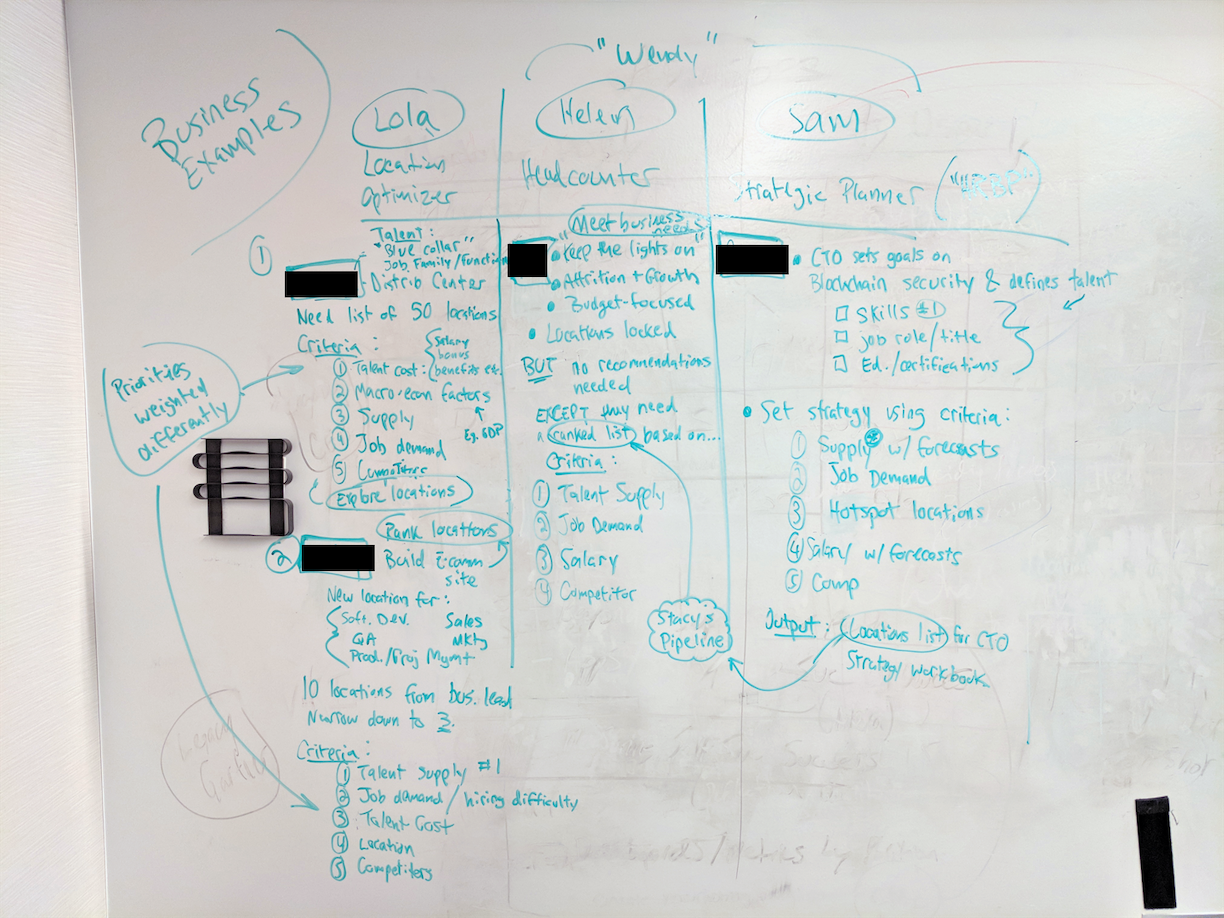
In this exercise, we explored how our personas would work through certain business cases and identified key data points they might need to acquire to create a strong narrative and talent strategy for the business.
The first proto-persona we chose to explore further was Lola the Location Optimizer (working title). We defined most of Lola’s interactions in our platform around location-based questions: i.e., how much is this location going to cost, what are the demographics of the area, what is the population, and other like questions. We already encountered several users in previous user research sessions that fit her profile and her active presence in the platform identified her as a primary user. To learn more about Lola, we reached out to users who matched her profile and asked them questions. The goal of this was to gather data about how they work and what their goals and challenges were. We also walked them through user tests to identify any similar behaviors and thoughts that these users might have when completing a task for a goal. These exercises gave us direct insight into what their roles were within their organizations and what their workflows looked like. We would take this data and compare it to our proto-persona to determine its validity.
An interesting thing we learned about Lola was her role did not exist in many organizations due to how relatively new it was in the overall HR structure. Many of the businesses that hired Lolas specifically were more data-driven with larger HR departments. She did exist in other organizations at different capacities, however. Lola was often someone with a data analyst background who transitioned into talent analytics and was responsible for several aspects of the talent side of the business. She would solve problems for location-specific questions but would also develop analyses for the roles and skills needed within the organization. It was for this reason that we ended up debating on what title and responsibility scope to give Lola.
After looking at the research, we determined Lola’s location focused use case valid and increased the importance of talent data needed within her process. We went through many iterations of her title initially and settled on Strategic Workforce Analyst due to her main goal: create a data-backed analysis that recommends the best locations to consider developing based on location, talent, and other factors.
While researching for Lola, we also looked to revalidate our already defined personas. We crafted questions for user interviews around our existing dataset to test if it was still representative of our users. Additionally, much like Lola, we walked them through user testing to evaluate behaviors and thought patterns while testing out future features for the platform. We found that many of the goals and needs outlined in our personas were still accurate, but some of their profile information needed to be updated. For example, we pinpointed that our recruiter persona was much more tech-savvy than previously identified.
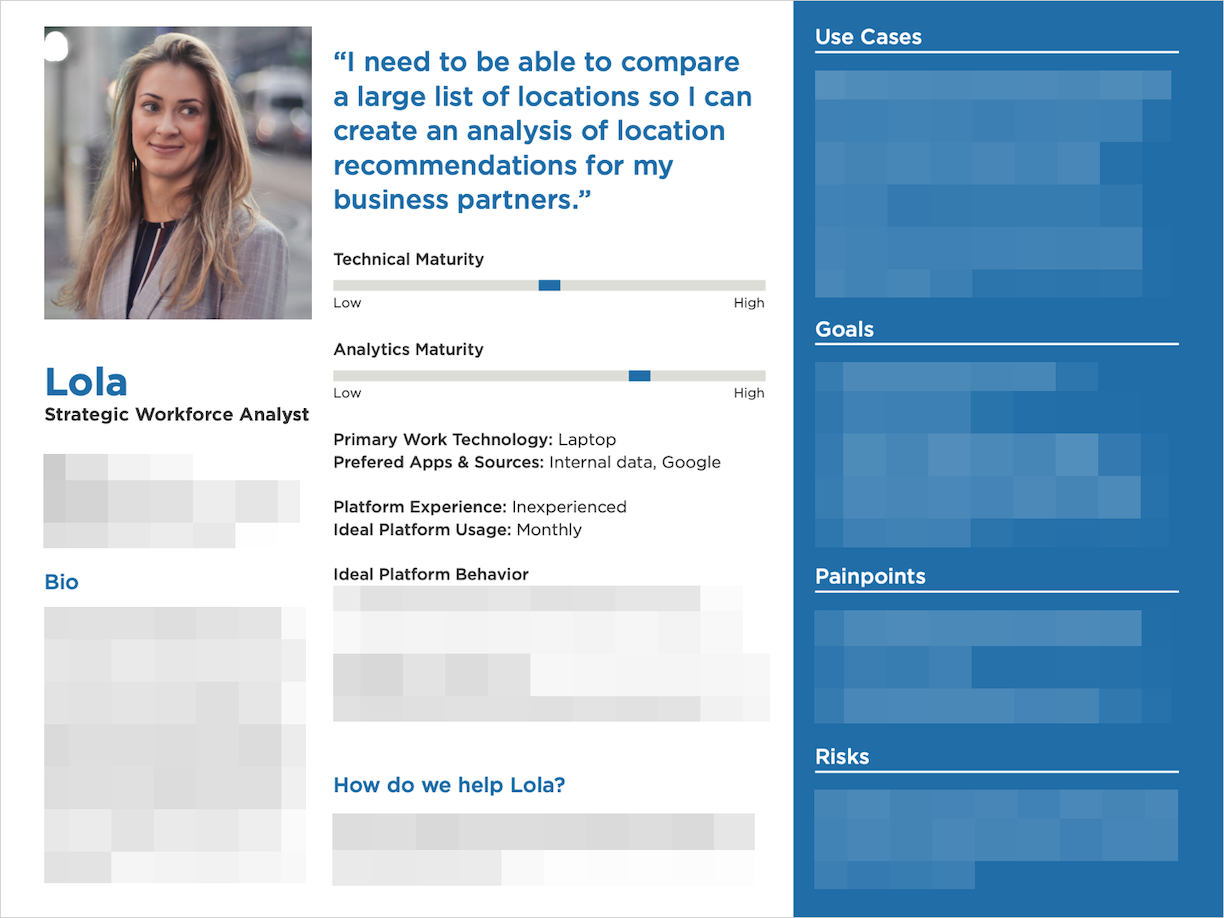
The fully developed personas featured crucial information about their use cases, goals, and painpoints to make sure we were creating features that helped them achieve their objectives.
Moving forward with this process, we needed to remember that personas are living documents that should grow as our users develop, so we need to assess them regularly. The process was as follows:
- Set aside time every quarter to reflect on our research
- Identify new data for our existing personas that needed further review, if any
- Identify if we needed to consider a new user type (proto-persona)
- Develop a research plan to verify and update our personas
- Distribute updated and new personas throughout the greater TalentNeuron organization
After every persona cycle, additional time would be spent to reflect on the process itself and identify any opportunities to improve it, whether it be to streamline the process more or add more data collection methods.